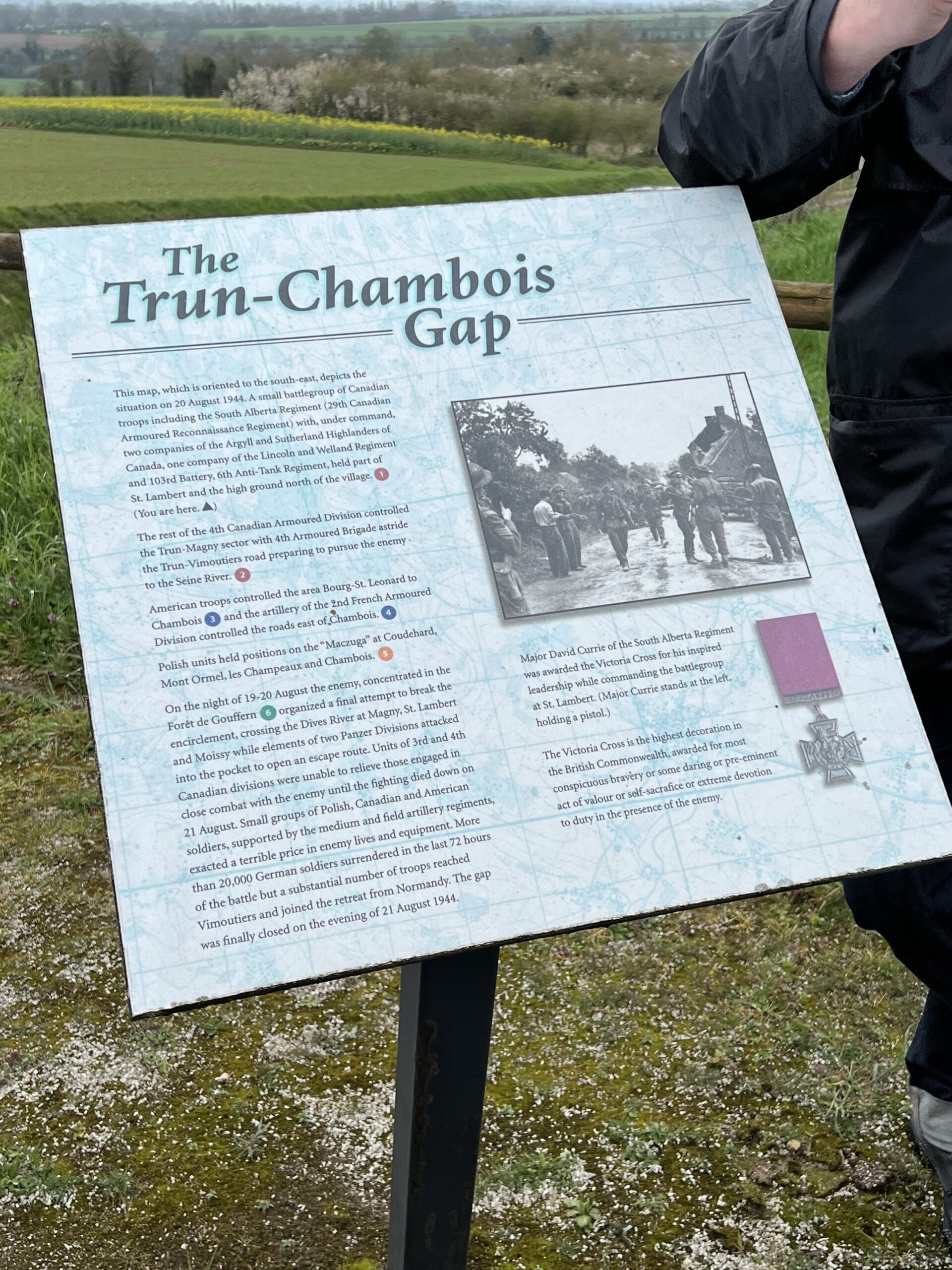Today is the 6th April 2023 and it is the sixth day of Paul’s Battlefield Tour in Normandy. This is my last day. We started this tour on one of the landing beaches, Omaha. We looked at the role of the Commandos and US Airborne. We examined the difference in terrain between the British/Canadian and American sectors, then onto the big push of the Americans, while the British held back the vast majority of German armour. Finally, we looked at the last roll of the dice from the German’s (Operation Luttich), which allowed the Canadians and British to push south, while the Americans were chasing the Germans from West to East. The Germans were in full retreat. They wanted out of Normandy so they could get across the Seine and re-group.

It ended up with the Canadians and a Polish Armoured Division to the north, British to the west and American to the South. The Germans were surrounded, and they were trying to squeeze through a gap which was getting smaller by the day. They needed to cross the Dives River. There were four crossings, but these were reducing over the coming days.

We visited St Lambert-sur-Dive. On the 14th August 1944 the Canadians launched Operation Tractable which was to try and cut off the retreating Germans and trap them in. After the Canadians had taken Trun, Major George Kitching of the 4th Armoured Division was ordered to seize St Lambert-sur-Dive. He ordered the 29th Armoured reconnaissance regiment (The South Alberta Regiment) to take the village so they could control the roads and exits which the Germans were using. On the 19th August 1944 Major David Currie commanding officer of C Company of the Sherman Armed Regiment started with 175 soldiers headed towards the village.

Major Currie, his men and his tanks had to hold back thousands of retreating Germans and held the village with very close quarter fighting. They succeeded in destroying 7 tanks, 40 vehicles, 12 field guns. They took 2,100 prisoners. Major Currie was awarded the Victoria Cross and part of his citation read as follows: –

“During the next 36 hours the Germans hurled one counterattack after another against the Canadian force but so skilfully had Major Currie organised his defensive position that these attacks were repulsed with severe casualties to the enemy after heavy fighting.”
We looked at Then and Now Photographs and walked the exact positions.
We then moved onto Moissy Ford, which became the last crossing point for the retreating Germans. You could understand how this became a killing point for the allied airpower and the carnage which was left behind.

We then moved onto Chambois, which was where American and Polish forces met to close the pocket. From there we travelled up to Hill 262 and the Polish Mace. Here the Polish Armoured Division had taken the high ground which was at the head of the only route out of the pocket.


The Germans Counter Attacked the position and we visited the site where well concealed Polish tanks went toe to toe with German Panzer divisions, causing major destructions to the German armoured units. The Poles were isolated and running low on ammunition eventually lead elements of the 4th Canadian Armoured Division who fought hard to get to the Poles. By the evening of the 21st August 1944, the pocket had been closed.

50,000 Germans had been captured and 10,000 were killed or wounded. Many had had escaped over the Seine to fight another day. The amount of armour and horses that the Germans lost was huge and within two weeks Paris had been liberated.
The weeklong battlefield Tour has been fantastic, and I have learnt so much. I have visited so many sites which are off the normal D-Day tour guide. Paul and Mag have put together a wonderful tour and I must thank them both for their time, effort, knowledge and delivery. I look forward to returning and gaining more details on their next adventure.


Hi Callum, a great wrap up! Hope to see you again sometime. Come visit us it the DC area. We really enjoyed your company. Susan and Joe